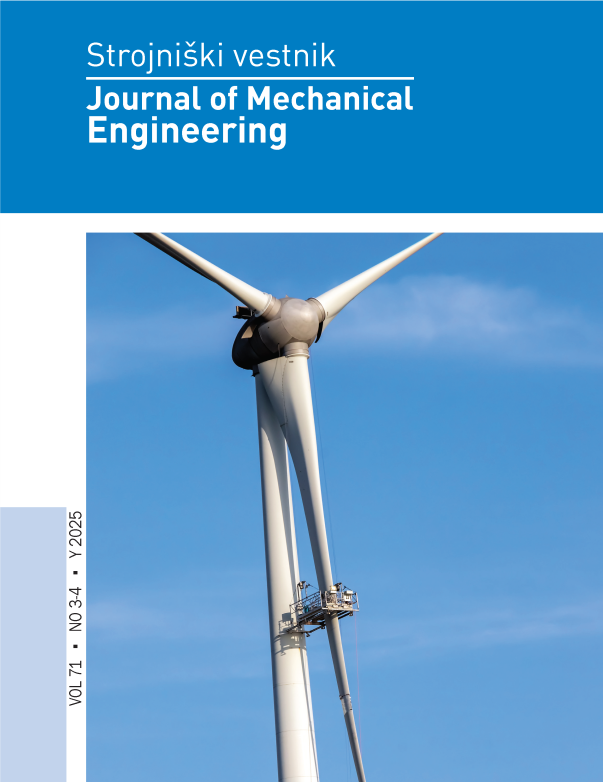Comparison and Optimization of Burnishing Parameters in Various Machining Conditions
DOI:
https://doi.org/10.5545/sv-jme.2024.1248Keywords:
Cryogenic diamond burnishing, Energy consumption, Maximum roughness, Circularity, Kriging modelAbstract
This study proposes a cryogenic diamond burnishing process and optimizes cooling parameters, including the distance to nozzle (N), nozzle diameter (D), and CO2 flow rate (Q) to minimize the maximum roughness (R), energy consumption (E), and circularity (C). The Kriging and adaptive-network-based fuzzy inference system (ANFIS) methods were ultilized to propose the response models. The CRITIC, non-dominated sorting genetic algorithm-II (NSGA-II), and MABAC were applied to calculate the weights, generate feasible solutions, and select the best optimal data. The result indicated that the optimal N, D, and Q were 15 mm, 9 mm, and 8 L/min, respectively. The reductions in the roughness, energy, and circularity were 15.5 %, 2.0 %, and 38.6 %, respectively. The roughness and energy models were primarily affected by Q, D, and N, respectively, while circularity model was influenced by the N, D, and Q, respectively. The proposed process could be used to machine different holes with minimizing environmental impacts. Lower roughness and circularity were achieved using the cryogenic diamond burnishing process. The Kriging-NSGA-II could be utilized to show non-linear data and produce the best results.
Downloads
Published
How to Cite
Issue
Section
License
Copyright (c) 2025 The Authors

This work is licensed under a Creative Commons Attribution 4.0 International License.


